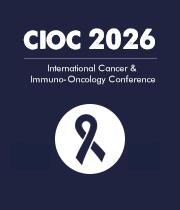Title : Integrative multi-omics reveals metabolic–stemness coupling and novel therapeutic targets in osteosarcoma chemoresistance
Abstract:
Chemoresistance remains the predominant cause of treatment failure in osteosarcoma (OS), yet its underlying molecular circuitry remains poorly defined. To address this gap, we conducted a series of mechanistic and clinically informed studies integrating molecular biology, epitranscriptomics, and single-cell transcriptomics to systematically decode resistance plasticity in OS. Our work demonstrates that dysregulation of ubiquitin-mediated proteostasis plays a central role in chemotherapy resistance. We identified the E3 ubiquitin ligase SOCS1 as a key suppressor of resistance, which is frequently downregulated in chemoresistant OS tissues and cisplatin-resistant cell models. Mechanistically, SOCS1 promotes K63-linked ubiquitination and proteasomal degradation of ACTN4. Loss of SOCS1 stabilizes ACTN4, thereby enhancing tumor stemness, self-renewal capacity, and tolerance to cisplatin. Restoration of SOCS1 expression or inhibition of ACTN4 reverses these phenotypes, establishing the SOCS1–ACTN4 axis as a druggable resistance driver with clinical relevance. In parallel, we uncovered an epitranscriptomic mechanism of metabolic adaptation in OS chemoresistance. Our findings demonstrate that METTL3-mediated m⁶A modification stabilizes the oncogenic long noncoding RNA LINC00520 in a YTHDF2-dependent manner. LINC00520 binds and stabilizes ENO1 by preventing FBXW7-mediated ubiquitination, leading to enhanced glycolytic flux and supporting cisplatin resistance under metabolic stress. Targeting this METTL3/LINC00520/ENO1 glycolytic axis suppresses tumor growth and restores drug sensitivity in vivo, highlighting an RNA modification–driven resistance pathway. To characterize resistance heterogeneity in the clinical setting, we performed single-cell RNA sequencing on chemotherapy-resistant OS patient samples collected at our center. We identified highly mutated malignant subpopulations of pre-osteoblast origin that emerged under chemotherapy selection. These resistant cell states demonstrated strong cell–cell communication with inflammatory cancer-associated fibroblasts (iCAFs) and exhausted CD8⁺ T cells, particularly through MIF–CD74 and CXCL signaling, promoting immune evasion and survival under chemotherapeutic stress. These findings suggest that resistance maintenance is not solely tumor-intrinsic but also reinforced by tumor–stroma–immune crosstalk within the OS microenvironment. Collectively, these works establish a multi-dimensional model of chemoresistance in osteosarcoma driven by ubiquitination failure, epitranscriptomic reprogramming, metabolic adaptation, and immune remodeling. By decoding resistance as a coordinated and adaptive network rather than a single-pathway event, our findings provide a mechanistic foundation for multi-axis therapeutic strategies targeting protein stability, RNA modification, and microenvironmental signaling to overcome drug resistance in OS.



